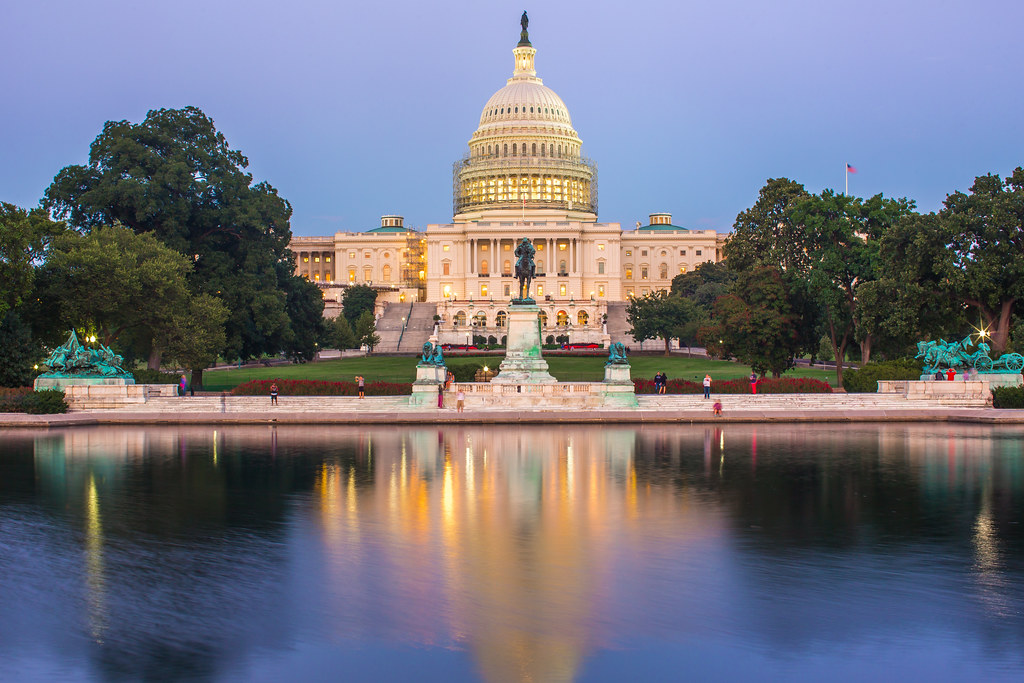Are Members of Congress Too Rich?
For the first time, most members in the U.S. Congress are millionaires.

A person can't open the newspaper these days without encountering a reminder of the plummeting value of the dollar. Sunday's New York Times was a perfect example. The lead editorial, about money in politics, reports, "As the money torrent rises, it's no coincidence that for the first time in history, most members of Congress are millionaires (268 of 534 House members), according to the Center for Responsive Politics."
This is indeed "no coincidence," but not in the way the Times intends. The rising number of millionaires in Congress is not some indication that the legislature has been overrun by the rich, but further evidence, as if it were needed, that a million dollars isn't what it used to be. The Center for Responsive Politics count the Times references makes no adjustment for inflation, so there's no way to tell, as measured by any real yardstick, whether today's Congress is richer or poorer than it used to be. In fact, the rising number of millionaires in Congress may be a sign that the chamber is more representative than it is plutocratic; CNBC reported recently that there are a "record number of millionaires living in the U.S.," an estimated 10.4 million of them, if one counts by assets and does not include the value of one's primary residence.
Elsewhere in the Sunday Times, a column about the uncertain fate of the Big Apple Circus, a non-profit entertainment organization that is a cultural treasure if there ever was one, reports, "In 1981, the year that the Big Apple Circus, which Binder founded with Michael Christensen, began to pitch its tent behind Lincoln Center, the price of a bagel at Zabar's was 35 cents. Now that same bagel was $1.66, the ad explained, and so by the logic of bagel math the average price of a ticket to the circus might have risen accordingly, from $25 in the early 1980s to $118 today. Instead it was $65." (The circus, or the Times article, might have used a different example: the price of a single copy of the New York Times at a newsstand in New York City, which soared to $2 in 2009 from 60 cents in 1999.)
The leap from confusion to clarity in each of these cases involves seeing them not as news about the rising prices of bagels, the rising wealth of Congressmen, or the rising price of newspapers, but as details in a single big story about the declining value of the dollar used to measure those things.
A useful new guide to this situation has just been published by Encounter Books in the form of John Tamny's Who Needs the Fed? What Taylor Swift, Uber, and Robots Tell Us About Money, Credit, and Why We Should Abolish America's Central Bank. Tamny emphasizes that this an issue where the blame is bipartisan. George W. Bush's Treasury Secretary John Snow once asked publicly, "What's wrong with a weak dollar?" During the George W. Bush administration the dollar plummeted in value, from being worth 1/266th of an ounce of gold at his inauguration in 2001, to a mere 1/940th of an ounce of gold in July 2008. In 1933, President Franklin D. Roosevelt devalued the dollar to 1/35th of an ounce of gold, from 1/20th of an ounce. Nixon delinked the dollar from gold altogether and unleashed a ferocious inflation that it took Reagan and Clinton to whip.
As Tamny writes, "A truly strong dollar would be one that is unchanging in terms of value. A floating dollar robs money of its sole purpose as a measure meant to facilitate trade and investment."
Without understanding the dollar's definition as a unit of measurement, it becomes difficult to make much sense of the world. Are congressmen suddenly too rich, or is that complaint just class warfare by the left-wing press and its non-profit sources? Why is the circus in danger of going out of business?
Thinking this way about money doesn't mean the Federal Reserve is to blame for all of America's problems, or that a better monetary policy would be a panacea. It does mean, though, that an essential step to making sense of nearly any economic story in the news is, if there are dollars involved, to ask what they are worth, and how it compares to what they used to be worth.
